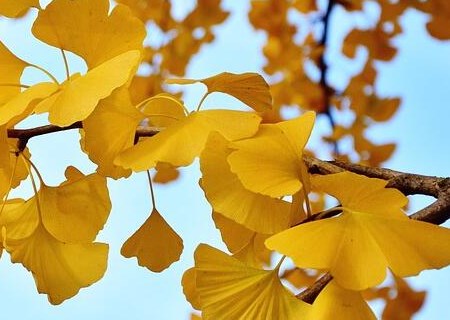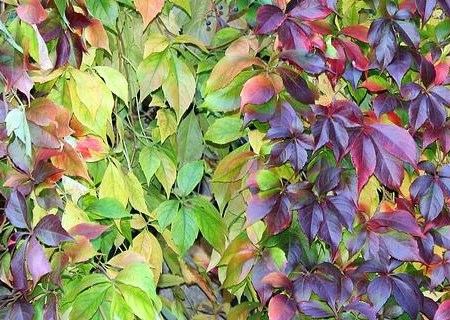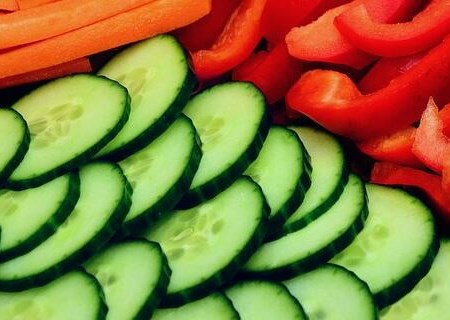What are the seed planting methods of ginkgo trees? What's the use? How much is one? What's the use?
Ginkgo biloba is a deciduous tree of Ginkgo biloba family. Ginkgo biloba is a large deciduous tree with a breast diameter of up to 4 meters. So what do you know about ginkgo seed planting methods? What's the use? How much is it per tree? The fruit of ginkgo tree is commonly known as ginkgo, so ginkgo is also known as ginkgo tree. Ginkgo tree grows slowly and has a very long life. under natural conditions, it takes more than 20 years from planting to bearing ginkgo fruit, and it takes 40 years to bear a large amount of fruit. it is the old birthday of the tree, with ornamental, economic, medicinal and other values.

I. seed planting methods of Ginkgo biloba
1 sowing and raising seedlings
Under the condition of seed propagation and natural growth, the dryness is very strong, the crown is high and the main branches are few; the seeds of artificially planted ginkgo trees should be harvested with large grains, and the mother trees about 80 years old are the best, and the seeds collected are peeled and dry. For early fruiting and convenient management, the trunk can be controlled not to be too high, but the branches can be expanded in all directions. The dry height is generally 1.0 to 1.5 meters, and the trunk is short, which is conducive to accelerating crown growth, early fruit and high yield, as well as management and harvest. Autumn sowing is available in the south and spring sowing is suitable in the north. The sandy loam with good water permeability should be selected in the seedling bed.
2Propagation stage
In February and March, the sprouting shoots with roots on the basal half of the mother tree were dug up from the root tillers of the strong female trees in February and March, and planted in the nursery with a diameter of 1 cm to 4 cm. Before planting, the soil should be fertilized with basic fertilizer, and the depth of planting should be appropriate, not too deep and too shallow, and it should not be watered without excessive drought after transplanting. This method is easy to survive. It will blossom and bear fruit in about 10 years. It is propagated by sprouting tillers at the base of the trunk, and after grafting, it can bear fruit in 3-4 years, and the fruiting life can reach more than 3000 years at most.
Correct planting method of Ginkgo biloba
3Graft propagation
The strong branches in the full fruit stage were used as scions and were grafted on the seedlings by splitting method. When using grafting propagation, different scions are used, which also have different effects on crown development and yield. Generally, 2-3 scions were grafted on one rootstock. After the scion survived, the backbone branches at the top of the scion grew strongly and could form 1-2 main branches, and then branches were produced on these main branches to form several branch groups that expanded outward, and then continued to branch and expanded into a crown. High trunk grafting has less basal branches, more apical branches and late fruit, while low trunk grafting has more branches at the base, rapid crown expansion, early fruit and high yield. The first grafted ginkgo tree has a large annual growth, which can reach more than 1.0 meters, and then gradually weakens.
(4) take root in the soil
From May to June, the cuttage seedlings were cut into 10 cm to 15 cm from the soft branches of the same year or from the fruiting trees, leaving 3 to 4 leaves on the top, and the lower incision was cut into a Maltese slope. After the base was immersed in water for 2 hours, the cuttings were cut on the vermiculite sand bed and intermittently sprayed with water to ensure that the leaves were not dry and could take root in about one and a half to two months.
5 growth process
Seedlings transplant ginkgo biloba is a deep-rooted plant, growing for a long time, artificial planting, topography, topography, soil quality, climate should create good conditions for it. Choose high dry terrain, long sunshine, sufficient sunshine, deep soil layer, good drainage, loose and fertile loam, yellow pine soil, sandy soil, seedlings can be transplanted in spring and autumn every year. Among them, the acidic and neutral loam grows luxuriantly, grows well, and forms the forest ahead of time. Ginkgo biloba with a diameter of less than 5 cm can be planted with bare roots, and more than 6 cm generally need to be cultivated in soil. The seedlings planted with bare roots were in the slow seedling stage in that year. The seedlings with dirt can grow in that year. The seedlings were planted in rows and then irrigated with water. As for the planting of big trees, it is best to fill the pit with water before planting, and after the water in the pit has seeped, the big tree will be implanted into the pit to tamp, so that the water in the pit will come back to nourish the roots.
6 Seedling management
① ginkgo trees like fertilizer, moisture and high aeration, so it is necessary to strengthen soil and water management after ginkgo planting. First, we should persist in deeply digging and loosening the soil every year, at least around the tree plate; second, we should apply more fertilizers, especially more organic manure, such as barnyard manure and rotten garbage; and third, we should pay attention to irrigation and drainage, and properly water in the dry season. stagnant water should be removed in time in the rainy season. Deep excavation of loose soil is usually carried out in autumn and winter. Ginkgo biloba root early, when the ground temperature rises to 6 degrees Celsius, the root system begins to move. To the south of the Yangtze River, deep digging had better be completed before February. The application of chemical fertilizer can be carried out all the year round, and the application of organic fertilizer should be dug up and buried shallowly on the soil surface from September to October, or combined with deep digging in winter.
The distance between plants in Ginkgo biloba fruit forest is large, so it is the most suitable for interplanting crops. It's just that in interplanting, we should pay attention to choosing good crops. Those who absorb too much fertilizer, especially those that can cause serious diseases and insect pests, or root exudates that hinder the growth of ginkgo biloba, it is best not to plant. Some crops, such as corn, absorb a lot of fertilizer, but it is related to the lives of local farmers, and they can also be interplanted, but more fertilizer must be applied when interplanting. Practice has proved that the root exudates of plants such as tobacco and walnut are extremely disadvantageous to the growth of ginkgo, while potatoes can induce a large number of harm to grubs, so it is better not to plant. The growth of ginkgo biloba can not be short of organic fertilizer. When soil organic matter is insufficient, it often induces serious nematode damage. It is difficult to transport in mountainous areas, and it is difficult to apply a large number of organic fertilizers that need to be transported. However, the planting of green manure should also be based on ensuring the normal growth of ginkgo biloba, and the green pressing at flowering stage should be adhered to in order to give full play to the fertilizer effect of green manure.
The annual growth of ② ginkgo is relatively small, and it only shoots once a year under general management conditions. When the fertility is insufficient, the annual growth of branches is often less than 40 cm. The flower buds of ginkgo biloba are only formed in the short branches commonly known as bell branches. These two basic characteristics determine that ginkgo biloba is generally not pruned, or only for light pruning. However, because the grafted seedlings of Ginkgo biloba are often located at the edge of the crown, most of the grafted plants are often seriously partial to the crown, which will also affect the yield in the future. The way to correct the partial crown is to set up the pillar, hit the top properly (pick the heart), and apply more fertilizer at the same time. Generally speaking, as long as the terminal bud is cut off, several lateral buds in the lower part of the shoot can germinate, and several branches are formed in the first year or the second year, but the slow seedling stage is longer after ginkgo tree planting, and the partial crown is easy to be related to the deficiency of endogenous growth hormone. Ginkgo biloba seedlings with more organic fertilizer and well-developed root system basically have no slow seedling stage, and the partial crown can also be well controlled.
Artificial pollination of ③ ginkgo trees is the key technology to increase the yield of ginkgo biloba. Even if the ginkgo fruit forest is equipped with male pollination trees, artificial pollination should be carried out. There are many methods of artificial pollination, and the most practical way is to mix pollen into water and spray pollination. For the time of collecting male flowers, it is better for stamens to turn yellow. After picking the male flowers, spread them out to dry in time. Male flowers can sift out the pollen and dry it with quicklime. Such pollen can be kept at room temperature for more than 15 days. If kept dry and stored in the refrigerator, it can be stored for] years. If it is used for pollination within 10 days, do not screen out the pollen, just spread it out in a cool place. When in use, squeeze 1 kg of male flowers, add 30 kg of water, wash out the pollen, filter out the male flowers, and spray ginkgo trees as soon as possible.
What is the use of planting ginkgo trees
Economic value
The trunk of ginkgo biloba is straight, and wood is an advanced material for making musical instruments and furniture. Ginkgo wood is of high quality and expensive, and it is known as "Yinxiang wood" or "Yinmu". Ginkgo wood has luster, straight texture, fine structure, easy processing, non-cracking, strong corrosion resistance, easy to paint, low nail digging force, special medicine flavor and strong moth resistance. Ginkgo biloba wood can not only make handicrafts such as carved plaques and wooden fish, but also make high-grade furniture such as cupboards and desks. Ginkgo biloba wood is an ideal material for making musical instruments because of its resonance, sound conductivity and flexibility. Can make surveying and mapping utensils, pens and other cultural items, but also the production of chessboards, chess pieces, sports equipment, seals and small handicrafts of high-quality wood. In industrial production, Silverwood is the most suitable for making X-ray machine filter board, textile printing and dyeing roll, machine model and bodiless lacquer ware wooden mold, plywood, chopping board, wooden telephone and so on. Ginkgo biloba exocarp can be extracted from tannin extract. Seeds contain hydrocyanic acid, histamine acid, protein and so on. Seed kernel for consumption, multi-food poisoning, traditional Chinese medicine with seeds and leaves can be used as medicine.
Garden value
The ginkgo tree is tall and straight, with fan-shaped leaves. The crown is shady and has a cooling effect. The leaf shape is quaint and has a long life. No diseases and insect pests, no environmental pollution, smooth trunk, is a famous pollution-free tree species, conducive to the reproduction of ginkgo and add scenery. Strong adaptability, Ginkgo biloba has broad requirements for climate and soil. Anti-smoke, anti-fire, anti-toxic gas. Ginkgo biloba trees are tall, straight trunks, graceful posture, green in spring and summer, golden in late autumn, it is an ideal tree species for landscaping and street. It can be used as an ideal cultivated tree species for landscaping, roadway, highway, field forest network and windbreak forest belt. It is listed as the four longevity ornamental tree species (pine, cypress, locust, ginkgo) in China.
Ecological value
The ecological benefits of ginkgo biloba are mainly reflected in that ginkgo biloba belongs to not only fruit trees-dried fruits, but also forest timber species, protective trees, disease and insect resistant species, longevity trees and pollution-tolerant trees. Ginkgo biloba has strong adaptability and is an ideal tree species for fast-growing and high-yield forest, farmland protective forest, road protection forest, bank protection forest, beach protection forest, village protection forest, forest-grain intercropping and "four sides" greening.
Medicinal value
The medicinal uses of Ginkgo biloba are mainly reflected in three aspects: medicine, pesticides and veterinary drugs. Li Shizhen once said in the Ming Dynasty: "enter the lung meridian, benefit the temper, settle the wheezing cough, and shrink the stool." Ginkgo in Zhang Lulu's Benjing Fengyuan in the Qing Dynasty has the functions of reducing phlegm, clearing toxin and killing insects, and can treat "scabies, abscess, ulceration, dental caries, infantile diarrhea, red leucorrhea, chronic turbid, seminal enuresis and other diseases". In the Ming Dynasty, proprietary Chinese medicines made from ginkgo appeared in Jiangsu, Sichuan and other places, which were used in clinic.
How much is a ginkgo tree
Ginkgo seedlings 0.5-1.5 meters high quotation: 0.5-2 yuan per tree
3 cm ginkgo tree: 8 yuan per tree
8cm ginkgo tree: 120 yuan
10 cm ginkgo tree: 160 yuan per tree
15 cm ginkgo tree: 350-600 yuan
18 cm Ginkgo biloba tree: 500-1000 yuan
20 cm Ginkgo biloba tree: 800-1500 yuan
25 cm ginkgo tree: 2600-8000 yuan
30 cm ginkgo tree: 7000-22000 yuan
40 cm ginkgo tree: 50000 yuan
45 cm ginkgo tree: 24000-26000 yuan
50 cm ginkgo tree: 28000-32000 yuan
Grafted ginkgo tree price list
8 cm grafted ginkgo tree: 75 yuan
10 cm grafted ginkgo tree: 150 yuan
15cm grafted ginkgo tree: 350-650 yuan
18 cm grafted ginkgo tree: 650-700 yuan
20 cm grafted ginkgo tree: 800-1800 yuan
25 cm grafted ginkgo tree: 2000-4500 yuan
30 cm grafted ginkgo tree: 4500-8800 yuan
40 cm grafted ginkgo tree: 4000-4500 yuan
45 cm grafted ginkgo tree: 5000-5500 yuan
50 cm grafted ginkgo tree: 6000-7000 yuan
Time: 2019-03-18 Click:
- Prev

What are the seed planting methods of Parthenocissus parthenocissus in the grape family? What are the uses? What's the difference between ivy and ivy?
Parthenocissus is another name for a variety of plants, bundled stone dragon, maple vine, small insect lying grass, red silk grass, red kudzu, lying mountain tiger, red grape vine, Bashan tiger, grape plant. Do you know what are the seed planting methods of Parthenocissus? What are the uses? What's the difference between ivy and ivy? It is common to climb on walls and rocks.
- Next

What are the delicious cucumber seed planting methods? What is the effect and effect? Which people are not suitable for eating?
Cucumber, Cucurbitaceae annual trailing or climbing herbs. It is widely cultivated all over China, and is cultivated in greenhouses or plastic greenhouses in many areas; it is now widely cultivated in temperate and tropical regions. Do you know the planting methods of cucumber seeds? What is the effect and effect? It's not suitable for anyone to eat.
Related
- Fuxing push coffee new agricultural production and marketing class: lack of small-scale processing plants
- Jujube rice field leisure farm deep ploughing Yilan for five years to create a space for organic food and play
- Nongyu Farm-A trial of organic papaya for brave women with advanced technology
- Four points for attention in the prevention and control of diseases and insect pests of edible fungi
- How to add nutrient solution to Edible Fungi
- Is there any good way to control edible fungus mites?
- Open Inoculation Technology of Edible Fungi
- Is there any clever way to use fertilizer for edible fungus in winter?
- What agents are used to kill the pathogens of edible fungi in the mushroom shed?
- Rapid drying of Edible Fungi

